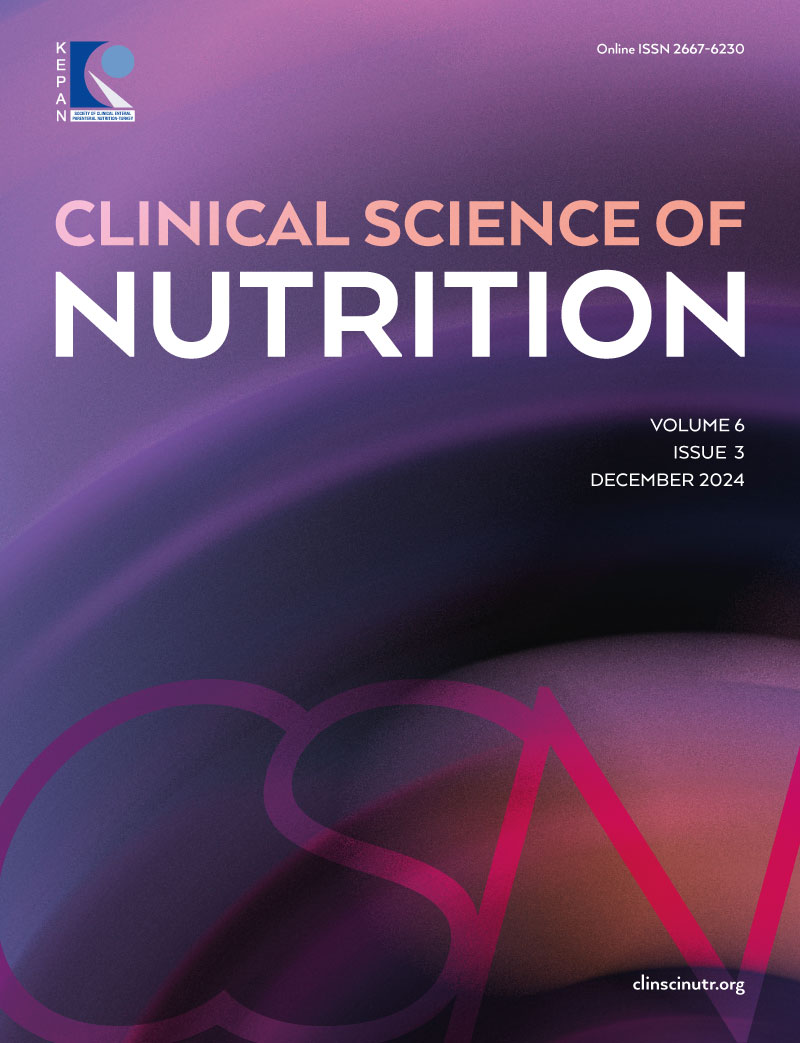Abstract
The popularity of blenderized tube feeding continues to increase due to patient and caregiver demand. However, the evidence for blenderized tube feeding is limited, particularly for its effectiveness and safety in long-term use. This case study, the transition process from blenderized tube feeding to medical nutrition therapy with commercial enteral formula in an adult patient with spastic dystonia. The patient was a 27-year-old male who was admitted to the neurology service. The patient, who had been on a long period of blenderized tube feeding, was malnourished when the nutritional status was assessed. The patient who was resistant to nutrition regimen changes was administered medical nutrition therapy, which included a commercial enteral formula with a gradual increase in dose, with a monitoring protocol for approximately three months. This case report discusses and applies the provision of individualized medical nutrition therapy in conjunction with appropriate decision-making by the nutrition support team for the nutritional management of an adult patient with a history of long-term blenderized tube feeding. Further research is needed to determine the indications, contraindications and treatment protocols for blenderized tube feeding.
Keywords: blenderized tube feeding, nutritional status, medical nutrition therapy, spastic dystonia
References
- Bennett K, Hjelmgren B, Piazza J. Blenderized Tube Feeding: Health Outcomes and Review of Homemade and Commercially Prepared Products. Nutr Clin Pract. 2020;35:417-431. https://doi.org/10.1002/ncp.10493
- Bobo E. Reemergence of Blenderized Tube Feedings: Exploring the Evidence. Nutr Clin Pract. 2016;31:730-735. https://doi.org/10.1177/0884533616669703
- Peers E, Boocock RC, Burn N. A systematic review examining the impact of blended diets on the gastrointestinal symptoms of people who are enterally fed. J Hum Nutr Diet. 2023;36:673-686. https://doi.org/10.1111/jhn.13090
- Sforza E, Limongelli D, Giorgio V, et al. The impact of blenderized tube feeding on gastrointestinal symptoms, a scoping review. Appl Sci. 2023;13:2173. https://doi.org/10.3390/app13042173
- Uniat KC, Stangarlin-Fiori L, Krüger JF, Schieferdecker MEM, Rabito EI. Microbiological quality of enteral formulations handled at home: A systematic review. JPEN J Parenter Enteral Nutr. 2022;46:1787-1796. https://doi.org/10.1002/jpen.2432
- Santos DCD, Ataide CDG, Mota da Costa N, Oliveira Junior VPD, Egea MB. Blenderized formulations in home enteral nutrition: a narrative review about challenges in nutritional security and food safety. Nutr Rev. 2022;80:1580-1598. https://doi.org/10.1093/nutrit/nuab121
- McCormack S, Patel K, Smith C. Blended diet for enteral tube feeding in young people: A systematic review of the benefits and complications. J Hum Nutr Diet. 2023;36:1390-1405. https://doi.org/10.1111/jhn.13143
- Schmidt SB, Kulig W, Winter R, Vasold AS, Knoll AE, Rollnik JD. The effect of a natural food based tube feeding in minimizing diarrhea in critically ill neurological patients. Clin Nutr. 2019;38:332-340. https://doi.org/10.1016/j.clnu.2018.01.007
- Fabiani A, Sanson G, Bottigliengo D, et al. Impact of a natural versus commercial enteral-feeding on the occurrence of diarrhea in critically ill cardiac surgery patients. A retrospective cohort study. Int J Nurs Stud. 2020;108:103605. https://doi.org/10.1016/j.ijnurstu.2020.103605
- Brown T, Zelig R, Radler DR. Clinical Outcomes Associated With Commercial and Homemade Blenderized Tube Feedings: A Literature Review. Nutr Clin Pract. 2020;35:442-453. https://doi.org/10.1002/ncp.10487
- Milton DL, Johnson TW, Johnson K, et al. Accepted Safe Food-Handling Procedures Minimizes Microbial Contamination of Home-Prepared Blenderized Tube-Feeding. Nutr Clin Pract. 2020;35:479-486. https://doi.org/10.1002/ncp.10450
- Ojo O, Adegboye ARA, Ojo OO, Wang X, Brooke J. The Microbial Quality and Safety of Blenderised Enteral Nutrition Formula: A Systematic Review. Int J Environ Res Public Health. 2020;17:9563. https://doi.org/10.3390/ijerph17249563
- Epp L, Lammert L, Vallumsetla N, Hurt RT, Mundi MS. Use of Blenderized Tube Feeding in Adult and Pediatric Home Enteral Nutrition Patients. Nutr Clin Pract. 2017;32:201-205. https://doi.org/10.1177/0884533616662992
- Schultz ER, Kim Y. Clinical outcomes associated with blenderized tube feedings in adults: A systematic review. Nutr Clin Pract. 2024;39:330-343. https://doi.org/10.1002/ncp.11087
- Bischoff SC, Austin P, Boeykens K, et al. ESPEN guideline on home enteral nutrition. Clin Nutr. 2020;39:5-22. https://doi.org/10.1016/j.clnu.2019.04.022
Copyright and license
Copyright © 2024 The author(s). This is an open-access article under the terms of the Creative Commons Attribution License (CC BY) which permits unrestricted use, distribution, and reproduction in any medium or format, provided the original work is properly cited.










